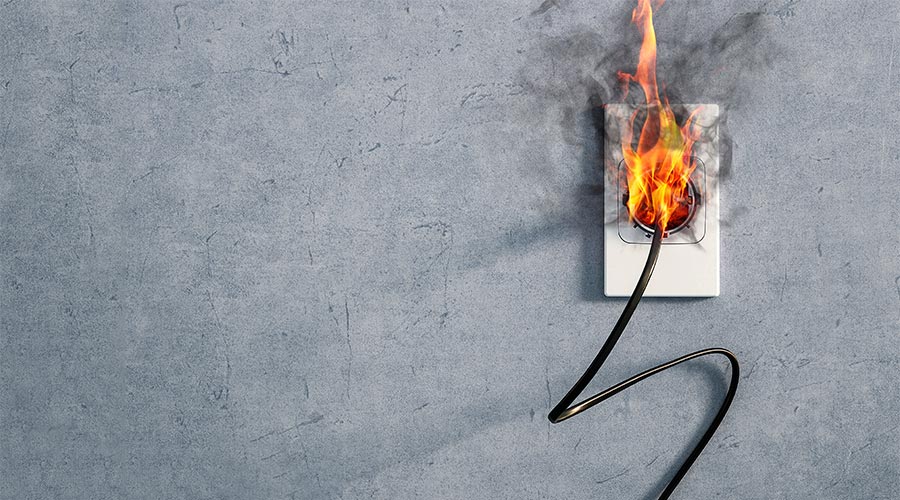Sprinkler Retrofit Project Considerations
Once the decision is made to retrofit, there is a lot to keep in mind. "You must do a very good survey initially and know all of the relevant features and physical constraints of the building," says Hamid Bahadori, principal with Hughes Associates. Finding out there's an obstruction while in the midst of a retrofit could lead to costly change orders. "You have to do detailed field work."
Take the water supply, for example. To meet domestic needs, there is probably only a 2-inch pipe coming into the building, but to meet the needs of a sprinkler system, you'll need a 6-inch or 8-inch pipe, says Gardner. If the water pressure is insufficient, a fire pump and the room to house it — at least a 10-foot-square space — will be needed. If municipal water demand cannot meet the sprinkler system demand, a water tank may be required.
The interaction with existing safety systems must also be taken into account. "You have to understand that sprinklers are part of the whole system, interfacing with the alarms, the smoke management system, the paths of egress," says Jelenewicz. A common mistake, he says, is assuming that the existing fire alarm system will work with the fire sprinkler system. Tamper switches and flow switches will need to be connected so that once the sprinkler goes off, it will send a signal to the fire alarm system.
And be sure to engage the appropriate design engineer, says Gardner. "Just being a plumbing engineer doesn't mean they know sprinklers," he says. Facility managers should have the system designed first, then sent out for bid. "That way you get an apples-to-apples comparison. If you just send a request out to contractors without a reference design, you'll get bids all over the place."
Mind The Details
Engaging a design engineer will also help to cover all the minutiae a facility manager might not think to ask: Should the pipe be painted? Should the sprinkler head be centered on the tile? Both of these, and other smaller considerations, will cost extra and might not be done unless specified.
Getting all of the authorities having jurisdiction together at the beginning of a project will also guard against surprises later on. These can include the fire marshall, the insurance company, the building owner, even a historic preservationist in applicable facilities.
Future maintenance is another significant consideration in a retrofit. "You'll have to think hard about where to locate valves and flow switches so they're easy to maintain," says Jelenewicz.
Drains are also not to be overlooked. For testing, the sprinkler system has to be drained from time to time, and it must drain to somewhere safe, like a field. Jelenewicz says he has seen sprinkler systems designed to drain into a floor drain or a slop sink, which will not work, as the volume of water in the system will overwhelm such drains.
Few would argue against the benefits of a fire sprinkler system, but especially in this economy, convincing the C-suite to fund any project is a challenge. Jelenewicz suggests using a hazard analysis to help prioritize which facility on a campus gets sprinklered first. Buildings storing the most hazardous materials would be higher up on the list, as well as mission-critical facilities.
Even where sprinklers are not mandated for existing buildings, retrofits make sense and could even serve as a differentiator. "Codes in our country are a minimum," says Gardner. "Nothing says you can't exceed the minimum." 
Related Topics:














